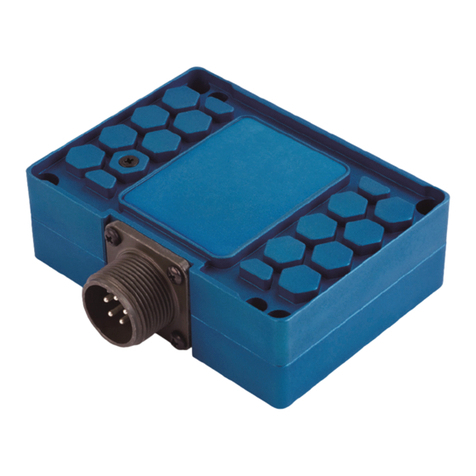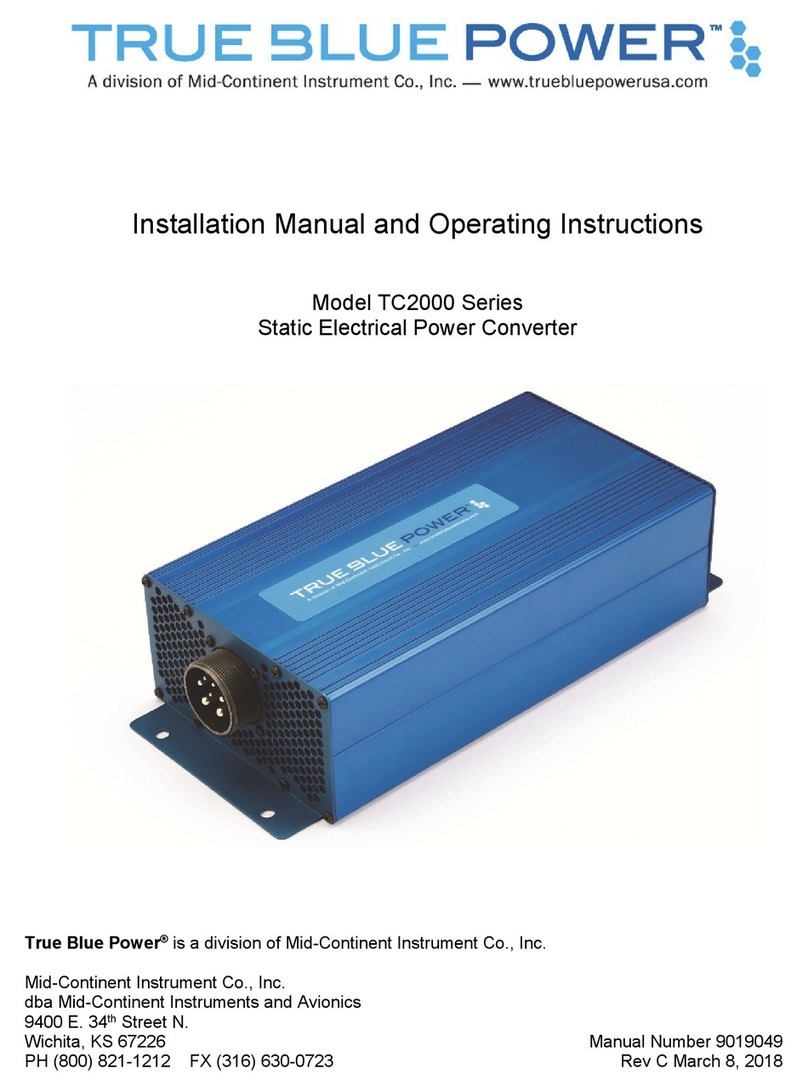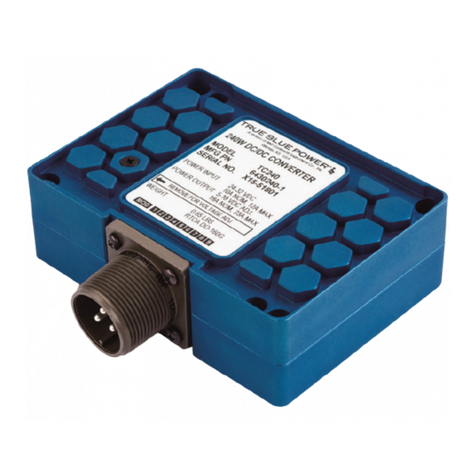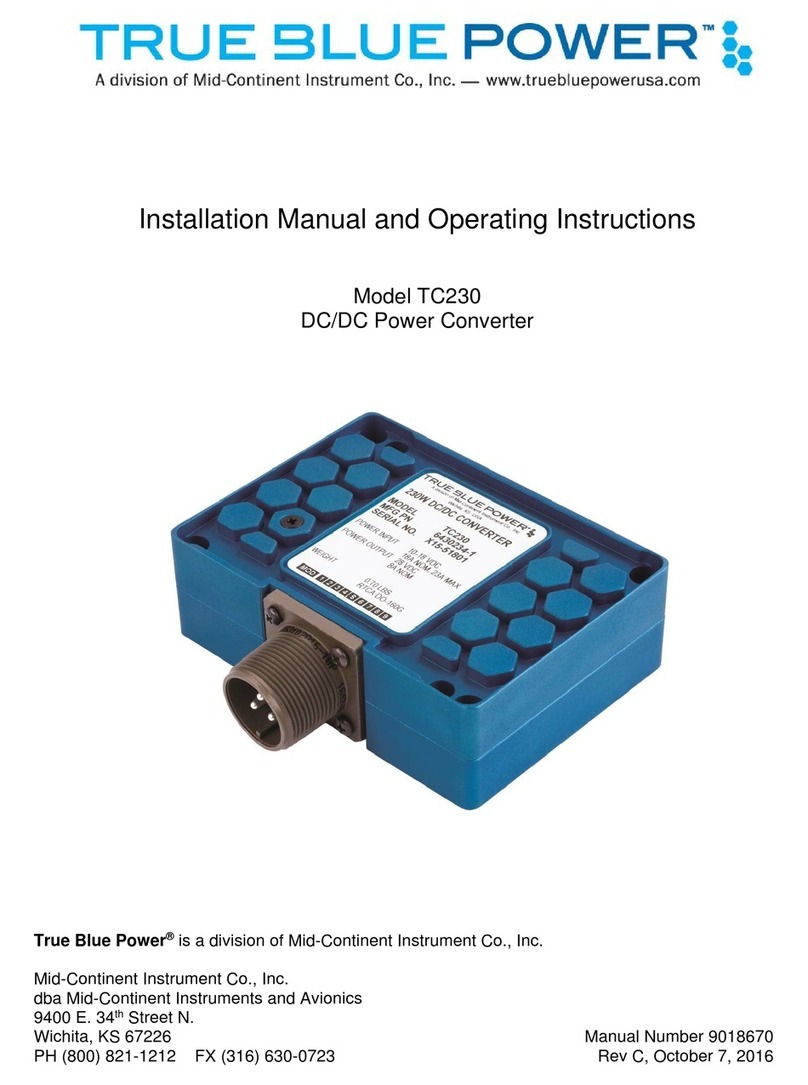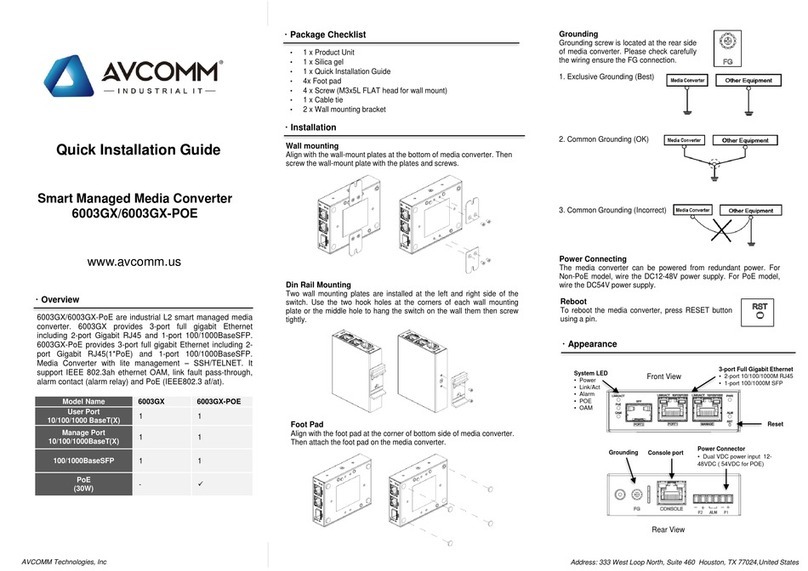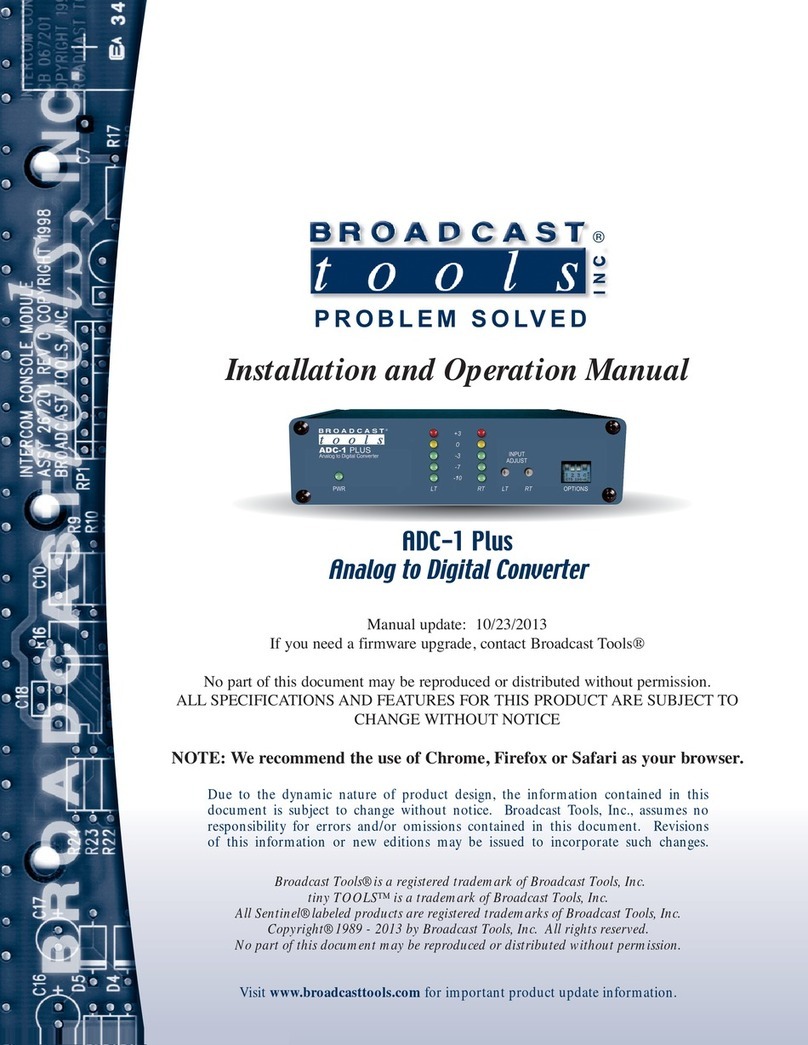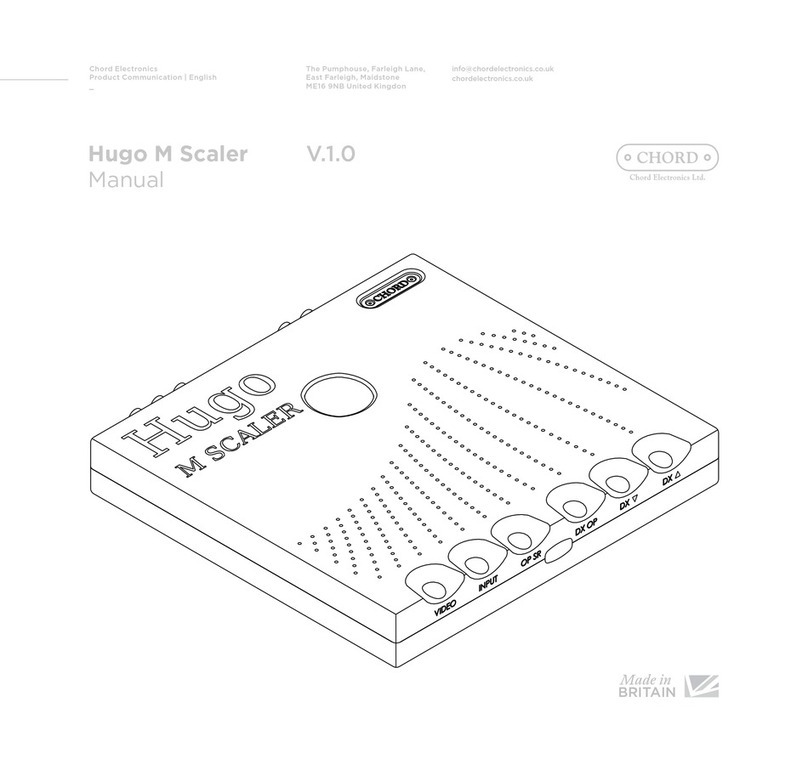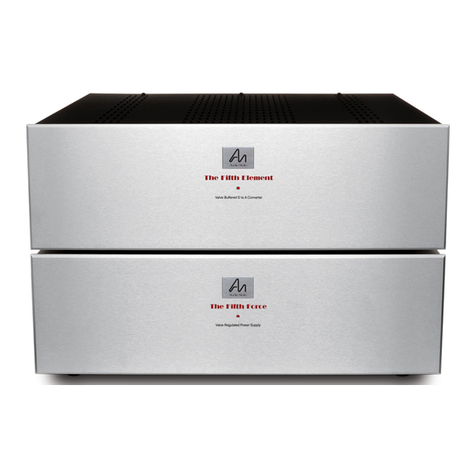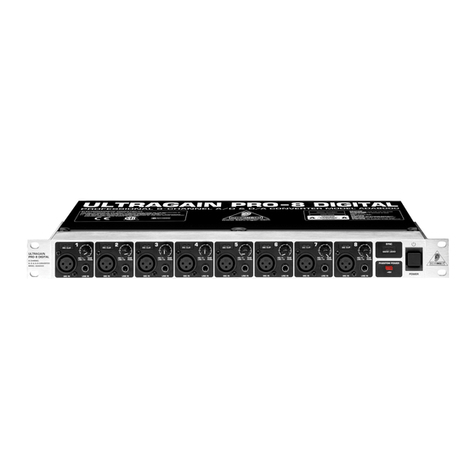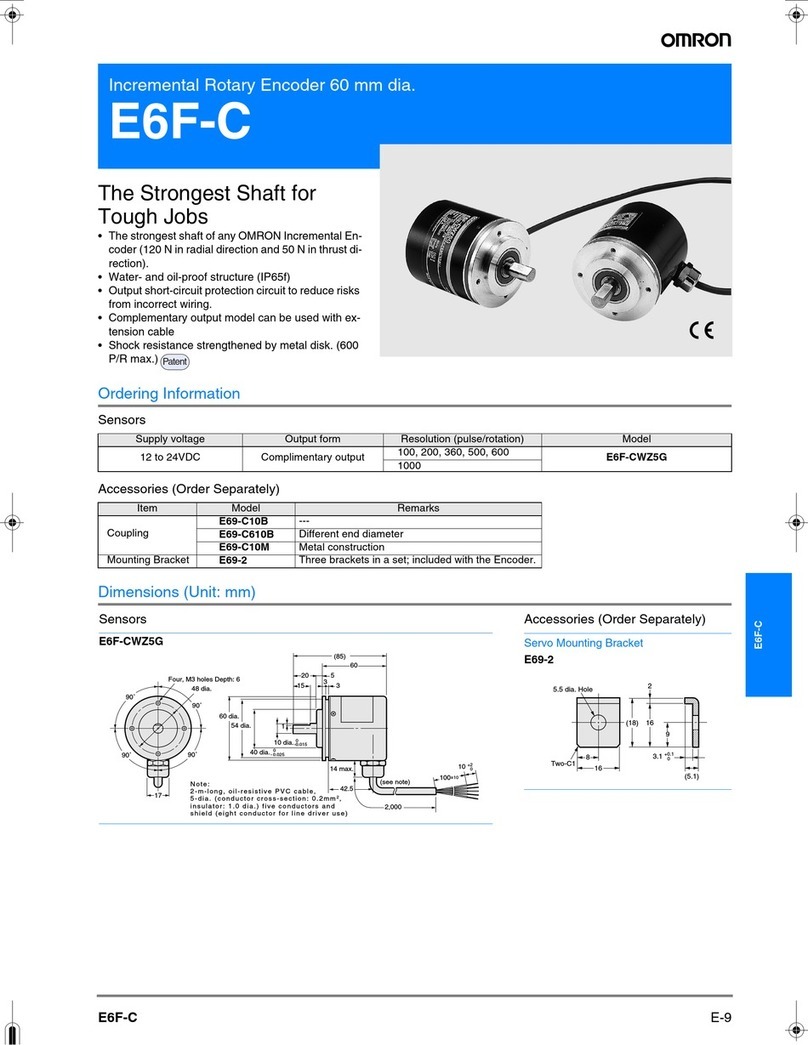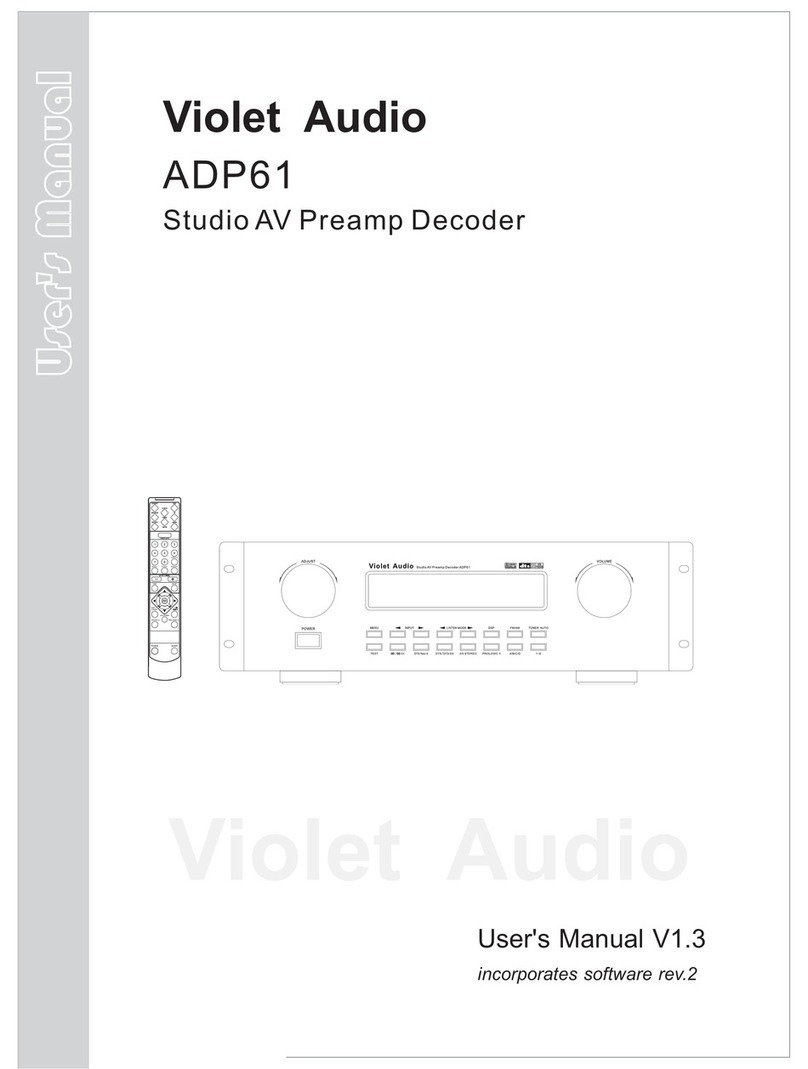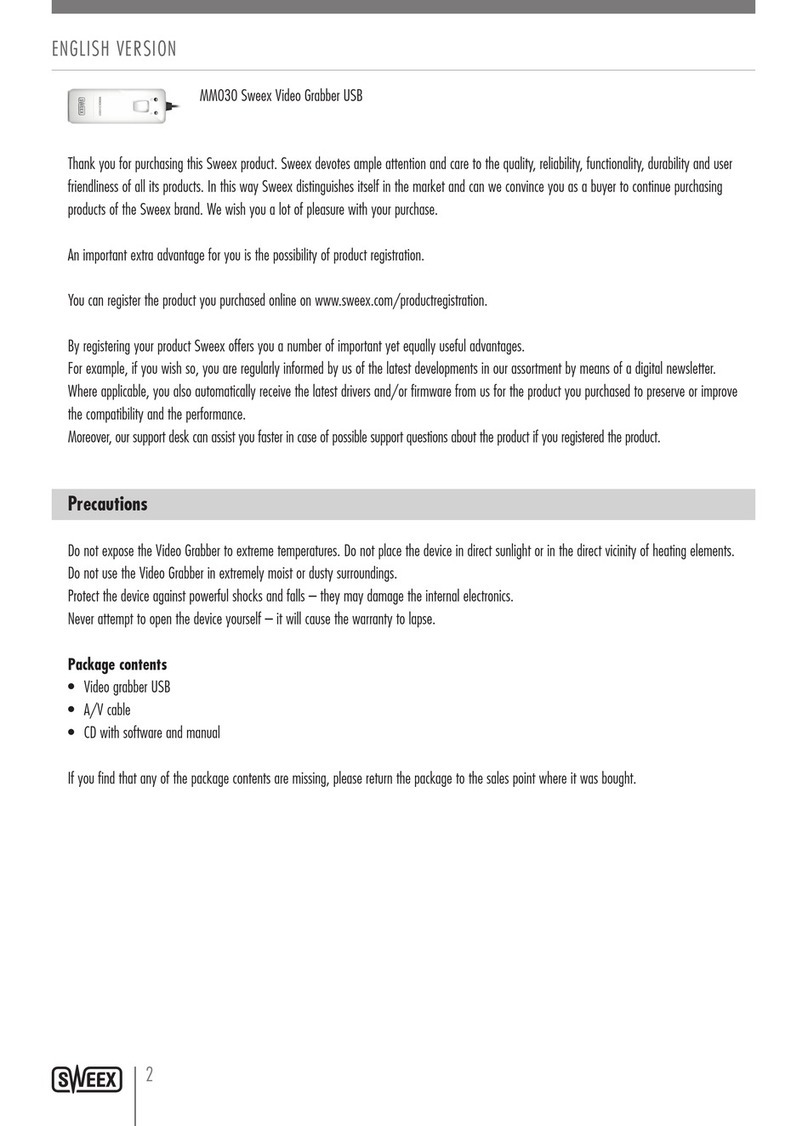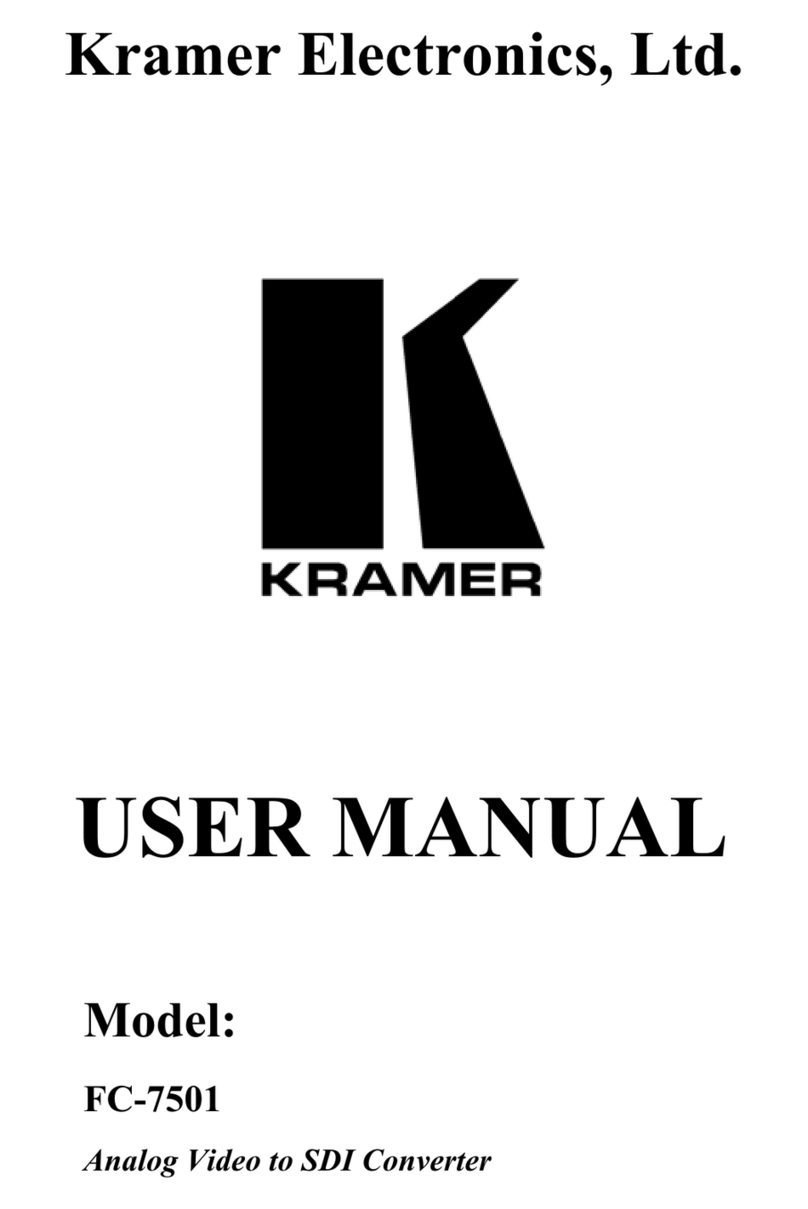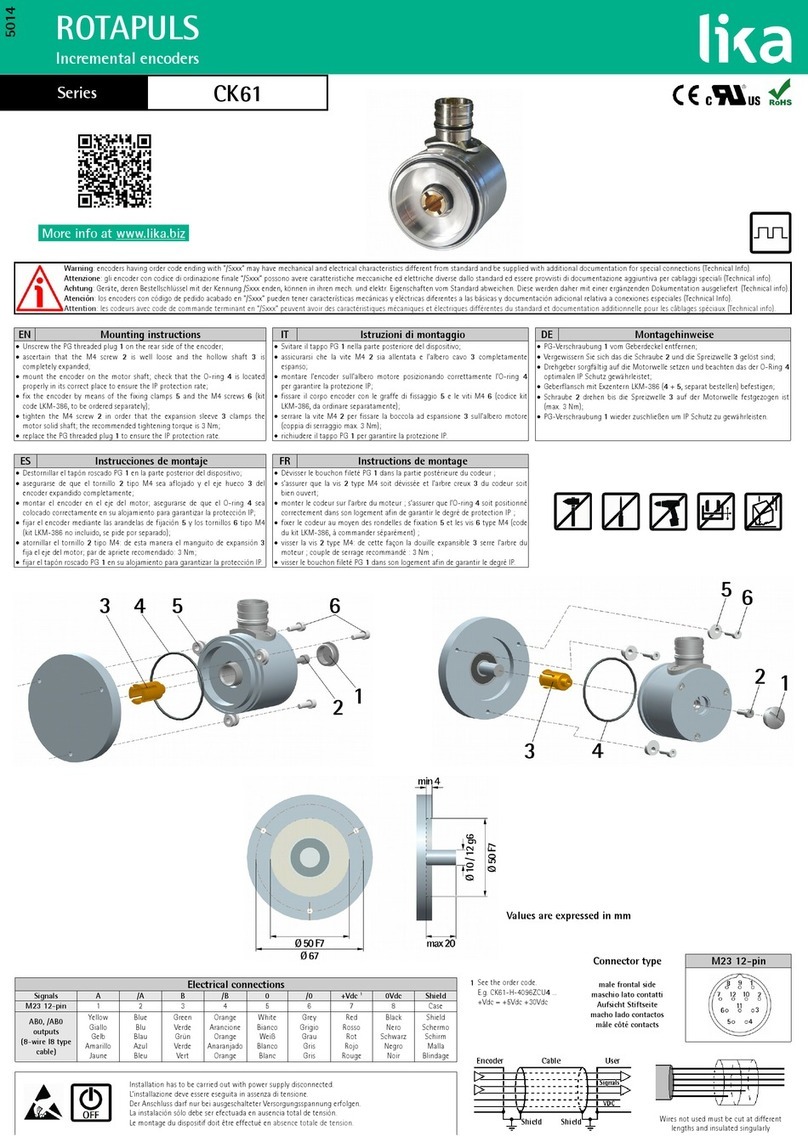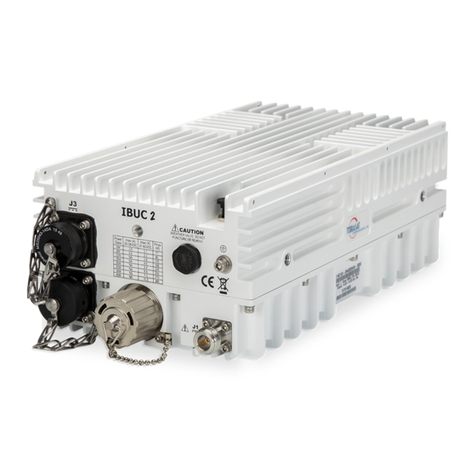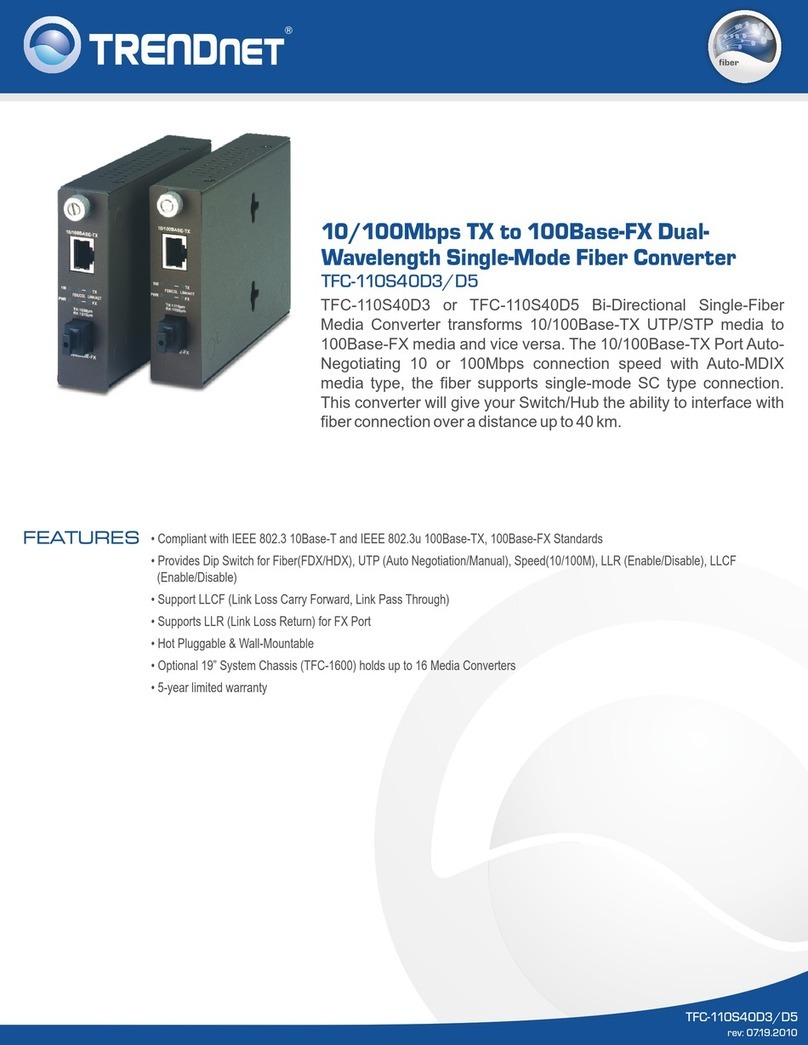True blue power TC280 Series User manual

Revision C • May 7, 2020

1 Manual Number 9018530 • Revision C, May 7, 2020
FOREWORD
This manual provides information intended for use by persons who, in accordance with current
regulatory requirements, are qualified to install this equipment. If further information is required,
please contact:
True Blue Power
c/o Mid-Continent Instrument Co., Inc.
Attn: Customer Service Dept.
9400 E. 34th St. N.
Wichita, KS 67226 USA
Phone 316-630-0101
Fax 316-630-0723
www.truebluepowerusa.com
www.mcico.com
We welcome your comments concerning this manual. Although every effort has been made to
keep it free of errors, some may occur. When reporting a specific problem, please describe it
briefly and include the manual part number, the paragraph/figure/table number and the page
number. Send your comments to:
True Blue Power
c/o Mid-Continent Instrument Co., Inc.
Attn: Technical Publications
9400 E. 34
th
St. N.
Wichita, KS 67226 USA
Phone 316-630-0101
Fax 316-630-0723
© Copyright 2016
Mid-Continent Instrument Co., Inc.
Download the current
version of this
installation manual
using your
smartphone or tablet.

2 Manual Number 9018530 • Revision C, May 7, 2020
TABLE OF CONTENTS
SECTION 1GENERAL DESCRIPTION 4
1.1INTRODUCTION 4
1.2TECHNICAL SPECIFICATIONS 5
SECTION 2PRE-INSTALLATION CONSIDERATIONS 6
2.1COOLING 6
2.2EQUIPMENT LOCATION 6
2.3ROUTING OF CABLES 6
2.4LIMITATIONS 6
SECTION 3INSTALLATION PROCEDURES 7
3.1GENERAL INFORMATION 7
3.2UNPACKING AND INSPECTING EQUIPMENT 7
3.3CABLE HARNESS 7
3.4MOUNTING 10
3.5INSTALLATION COMPLETION 10
3.6INSTALLATION CAUTION 10
SECTION 4OPERATION 11
4.1ELECTRICAL PERFORMANCE 11
4.2PROTECTIVE FEATURES 11
SECTION 5CONFORMANCE 13
5.1INSTRUCTIONS FOR CONTINUED AIRWORTHINESS 13
5.2ENVIRONMENTAL QUALIFICATION STATEMENT 13

3 Manual Number 9018530 • Revision C, May 7, 2020
REVISION HISTORY
Rev Date Detail Approved
A 11/04/2015 Initial release WVC
B 01/18/2016 Updated Section 5 to include certification updates; Table
1.1 minor revisions; Section 3.3.2 minor revision WVC
C 05/07/2020 Updated style and brand to meet Marketing and
Engineering guidelines. DLR

4 Manual Number 9018530 • Revision C, May 7, 2020
SECTION 1 GENERAL DESCRIPTION
1.1 INTRODUCTION
The model TC280 Series Static Electrical Power Converter is a lightweight power converter that
translates an alternating current (AC) input of 115 volts at 350-800 Hertz to a 28 volt direct current
(DC) output.
The wide input operating voltage and frequency make the TC280 suitable for nearly any common
business or commercial aircraft which provides 100-125 VAC between 350-800 Hertz. The output
of 10 amps @ 28 VDC produces 280 watts of power to supply avionics, instrumentation, personal
charging, lighting, and many other applications. The TC280 Series Static Converter is FAA certified
to TSO-C71 and tested to rigorous environmental standards and levels of RTCA DO-160G. The
small size and light weight in conjunction with its installation flexibility (inside or outside the
pressure vessel) make it an ideal choice for aircraft power needs while reducing the challenges
associated with other similar products.
Highlighted features include short circuit protection, overload capability, low voltage shut-down,
temperature monitoring, a self-resettable over-temperature disable and a remote on/off function.
The TC280 Series has a robust Military-rated circular connector and a rugged aluminum extrusion
case dissipates heat and provides excellent mechanical strength. It is engineered to run cooler and
requires no active cooling, featuring a fanless design, which saves energy, reduces weight and
allows flexible installation locations. At only 2.0 pounds, it is lighter and smaller than any other
certified solution in the aviation market today.

5 Manual Number 9018530 • Revision C, May 7, 2020
1.2 TECHNICAL SPECIFICATIONS
Electrical Attributes
Input Voltage: Rated 115VAC nominal, 350-800 Hz.
Input Current (full load): 2.8 Amps nominal; 4.4 Amps max
Input Current (unit off): 400 milliamps
Recommended Input Circuit Breaker: 5 Amps
Output Voltage: 28VDC ± 0.5 VDC
Output Power: 280 watts (28VDC @ 10 Amps rated)
Efficiency: 88% nominal
Total Harmonic Distortion (THD): Less than 3%
Table 1.1
Physical Attributes
Weight: 2.0 lbs (1 kg)
Dimensions:
(not including connector mate)
6.7 inches long x 6.0 inches wide x 2.0 inches
high
(171 mm long x 152 mm wide x 51 mm high)
Mating Connector (and cable clamp): MS3106A-18-9S (MCI P/N 9016905-1, -2)
Mounting: Base mount – orientation not critical
Table 1.2
Qualifications
Certification: FAA TSO-C71
Environmental Qualification: RTCA DO-160G Environmental Category;
See Section 5.2
Altitude: -15,000 feet to +55,000 feet
Temperature: -55°C to +70°C (-67°F to +158°F)
Table 1.3

6 Manual Number 9018530 • Revision C, May 7, 2020
SECTION 2 PRE-INSTALLATION CONSIDERATIONS
2.1 COOLING
The TC280 Series does not require external cooling or contain internal active cooling. Cooling of
the unit occurs exclusively through passive conduction through the base or radiated cooling across
the metal case. Additional cooling can be realized through convection (exposure to free moving air)
or conduction (mounting to a thermally conductive metal surface). These methods are not required
to achieve rated performance but can help prevent potential overheating and extend life when the
unit is operated at full power or during overload conditions. Specifically, mounting the unit to a
metal surface is preferred, but not required.
2.2 EQUIPMENT LOCATION
The TC280 Series is designed for mounting flexibility, allowing for installation inside or outside the
pressure vessel with no requirement for temperature control. In addition to altitude and
temperature resistance, the unit is also designed to withstand high levels of condensing humidity.
However, installation locations where the unit could be subject to standing or direct water exposure
should be avoided. The unit can be mounted in any orientation. Clearance should be provided for
the mating connector and may require as much as five inches past the unit connector to allow for
back shell access to the connector.
2.3 ROUTING OF CABLES
The wires and cable bundle associated with the unit are heavy gauge wire and carry significant
power. Be aware of routing cables near other electronics or with other wire bundles that may be
susceptible to high energy flow.
Avoid sharp bends in cabling and routing near aircraft control cables. Also avoid proximity and
contact with aircraft structures, avionics equipment, or other obstructions that could chafe wires
during flight and cause undesirable effects.
2.4 LIMITATIONS
The TC280 contains an internal DC-to-DC conversion function to produce the rated output as
specified. This function meets the requirements of FAA TSO-C71. The TC280 also creates an
initial translation of an alternating current (AC) input to the intermediate DC voltage, which then
gets converted to the rated output. This initial translation of AC-to-DC power is considered a non-
TSO function. This is due to the lack of an available AC-to-DC Technical Standard Order.
However, the AC-to-DC function is fully tested and verified per the equipment requirements and
design as well as the stated environmental requirements. The data to support the non-TSO
function have been submitted to and reviewed by the FAA along with the TSO-C71 requirements
and functionality.
The conditions and tests for TSO approval of this article are minimum performance standards.
Those installing this article, on or in a specific type or class of aircraft, must determine that the
aircraft installation conditions are within the TSO standards. TSO articles must receive additional
installation approval prior to being operated on each aircraft. The article may be installed only
according to 14 CFR Part 43 or the applicable airworthiness requirements.

7 Manual Number 9018530 • Revision C, May 7, 2020
SECTION 3 INSTALLATION
3.1 GENERAL INFORMATION
This section contains interconnect diagrams, mounting dimensions and other information
pertaining to the installation of the TC280 Series Static Converter. After installation of cabling and
before installation of the equipment, ensure that power is applied only to the pins specified in the
interconnect diagram.
3.2 UNPACKING AND INSPECTING EQUIPMENT
When unpacking this equipment, make a visual inspection for evidence of any damage that may
have incurred during shipment. The following parts should be included:
A. Static Converter MCIA P/N 6430280-( )
B. Mating Connector (& cable clamp) MCIA P/N 9016905-1 and 9016905-2
C. Installation Manual MCIA P/N 9018530
Equipment not provided:
A. Mounting Hardware Four 10-32 pan head screws
#10 lock washers (optional)
B. Cable Harness Wire See Section 3.3 for specifications
3.3 CABLE HARNESS
Construct the cable harness with regards to the instructions below, and using Figures 3.3 – 3.5,
and Wiring Diagram of Table 3.3.
Refer to Section 2: Pre-Installation Considerations in regards to routing precautions.
Wire Gauge Selection
Use of PTFE, ETFE, TFE, Teflon, or tefzel insulated wire is recommended for aircraft use.
Use the following wire gauges for each of the pins in the connector:
Pins A and D – 12-14 AWG stranded or solid
Pins B and C – 18-20 AWG stranded or solid
Pins E and G – 18-24 AWG stranded or solid
Pin Assignment Information
CONVERTER INPUT POWER:
Positive AC input – 115 VAC. Connect to the aircraft 115 VAC bus using a 5 Amp circuit
breaker.
Negative AC input – Connect to aircraft ground.
Note: Two common practices for the connecting the -28V output power devices in aircraft
are:
1. The negative lead connects from the device to the negative power bus.
2. The negative lead connects from the device to the negative power bus, and a second
lead connects to the aircraft structure close to the power device.
The TC280 Series passes DO160G Section 21 Table 1.2.3 conducted emissions testing
using both methods.

8 Manual Number 9018530 • Revision C, May 7, 2020
CONVERTER DC OUPUT:
DC Return – Used for powering devices where terrestrial/utility power designations are
used, pin D can be connected as “Neutral”.
DC Output – Used for powering devices where terrestrial/utility power designations are
used, pin A can be connected as “Line” or “Hot”.
Note: Use of a circuit breaker on the DC output is optional. For the full output of 280W,
a 12 Amp circuit breaker is sufficient.
CONVERTER REMOTE ON/OFF CONTROL: (see section 4.2.1)
Remote ON/OFF Control (Pin E) – Connecting this pin to either DC Negative or to aircraft
ground will enable the DC output of the Converter. By utilizing a switch between this pin
and ground or negative, it will allow remote on/off control of the unit. When unconnected
(output is OFF) this pin will have approximately 12 VDC present, internally limited to less
than 3 mA. If the Converter is to be enabled at all times, pin E is to be connected to pin D.
Figure 3.3 Table 3.3
Pinout View of Unit Connector Connector Pinout
Example Wiring Diagrams
The Converter is flexible in the wiring installation allowing for it to be integrated into the
aircraft according to the application needs. Examples are shown in Figures 3.4 and 3.5.
Harness Verification
With the TC280 Series Static Converter disconnected, activate the aircraft power bus that
supplies the unit and use a multi-meter to verify that aircraft power and ground with
appropriate voltage is on the pins within the mating harness.
Connector Pinout
A 28 VDC Output
B 115 VAC Input
C AC Return
D DC Return
E Remote On/Off
F Reserved
G Ground
A
D
B
E
C
F
G

9 Manual Number 9018530 • Revision C, May 7, 2020
115 VAC
B
C AC RTN
115 VAC INPUT
EON/OFF
ON
OFF
ENABLE
G
A
D
28 VDC
DC RTN
+
28 VDC OUTPUT
TC280
Figure 3.4: Typical TC280 Aircraft Wiring Installation – Remote On/Off
28 VDC OUTPUT
-
+
DC RTN
28 VDC
D
A
G
ON/OFF
E
115 VAC INPUT
AC RTNC
B115 VAC
JUMPER
TC280
Figure 3.5: Typical TC280 Aircraft Wiring Installation – Constant On

10 Manual Number 9018530 • Revision C, May 7, 2020
3.4 MOUNTING
Refer to Section 2: Pre-Installation Considerations in regards to equipment location.
The TC280 Series Static Converter is designed for base mounting only. Four 10-32 mounting
holes should be provided in the aircraft in accordance with Figure 3.6. Secure the unit with four
10-32 pan head screws, or equivalent. A lock washer under the head of each screw is
recommended.
2.0
5.94Connector per
MS3102A-18-9P
5.50
5.0
4.75
6.0
︵
4X
︶
Ø.22
10-32 Mounting Holes
0.7
0.6
Figure 3.6
TC280 Series Static Converter Outline Drawing
3.5 INSTALLATION COMPLETION
Prior to operating the unit in the aircraft, it is recommended to verify the output and functionality of
the unit. In order to prevent accidental damage to other systems, it is best not to attach the output
to other equipment or power busses prior to verification. Verify the output of the unit at the
terminating end of the cable with a multi-meter to ensure proper voltage and polarity. Once
verified, installation can be completed and functionality of the remote on/off feature (if used) should
be checked.
3.6 INSTALLATION CAUTION
Do not connect the output of the TC280 Series Static Converter to the output of any other
Converter or damage will result. Under no circumstance allow the output of the Converter to be
connected to ground utility AC power or damage will result.

11 Manual Number 9018530 • Revision C, May 7, 2020
SECTION 4 OPERATION
4.1 ELECTRICAL PERFORMANCE
The TC280 Series Static Converter converts an alternating current (AC) voltage input to a
regulated VDC output. See Table 4.1 specific output and input frequency.
Model Input Frequency Output
TC280 115 VAC 350-800 Hz 28 VDC
Table 4.1
TC280 Series Electrical Performance
The unit is capable of providing 280 watts to power a variety of aircraft accessories including lights
and onboard systems.
The unit is designed as a two-stage, solid-state switch-mode power supply. The power
transformation utilizes a first-stage boost methodology followed by an H-bridge DC forming second
stage. The first stage boost forms an intermediate DC voltage from the rectified AC input. The
secondary stage utilizes ‘current-mode’ control providing instantaneous load protection as an
advantage over legacy designs that incorporate ‘voltage-mode’ controllers.
4.2 PROTECTIVE FEATURES
Remote On/Off
The TC280 Series Static Converter incorporates a remote on/off feature that allows the
user to enable or disable the output of the unit. By providing a ground on the appropriate
pin (See Table 3.3) the user, via a remote mounted switch, can enable the output of the
unit. The unit can be similarly disabled by removing the ground signal (open circuit) to the
same pin.
Over-Voltage
If the output voltage exceeds 32VDC the unit senses an over-voltage condition and
disables the output.
Over-Temperature
The TC280 Series Static Converter incorporates an internal temperature sensing device
that continually provides monitoring and feedback to the control circuits. When the unit
senses an internal condition that exceeds maximum temperature ratings, the output is
disabled. The Converter will continue to remain shut-down until the temperature returns to
within acceptable limits. This over-temperature reset occurs automatically without external
intervention required.

12 Manual Number 9018530 • Revision C, May 7, 2020
Short Circuit and Over-Current
The TC280 Series Static Converter is capable of surviving a short circuit or over-current
event without permanent damage or effect to long-term reliability. The unit can provide over
its rated power output up to 308 watts for over 30 minutes (until over-temperature shutdown
occurs).
The Converter monitors the DC output on a pulse-by-pulse scenario to determine a short-
circuit or over-current situation. If detected, the output is limited by limiting the current
output to less than 15 A. If the short-circuit or over-current situation is removed, the unit will
return to normal operation.

13 Manual Number 9018530 • Revision C, May 7, 2020
SECTION 5 CONFORMANCE
5.1 INSTRUCTIONS FOR CONTINUED AIRWORTHINESS
No periodic scheduled maintenance or calibration is necessary for continued airworthiness of the
TC280 Series Static Converter. If the unit fails to perform to specifications, the unit must be
removed and serviced by Mid-Continent Instruments and Avionics or their authorized designee.
5.2 ENVIRONMENTAL QUALIFICATION STATEMENT
MODEL NUMBER: TC280 PART NUMBER: 6430280-( ) Series
DESCRIPTION: Static Electrical Power Converter CERTIFICATION: FAA TSO-C71
MANUFACTURER: True Blue Power, a division of Mid-Continent Instrument Co., Inc.
ADDRESS: 9400 E. 34th St. North, Wichita, KS 67226, USA.
SPECIFICATION: Test Specification (TS) 559 Test Data Sheet (TDS) 559
STANDARD: RTCA DO-160, Rev G, dated 12/08/10
CONDITIONS SECTION DESCRIPTION OF TEST
Temperature and Altitude 4 Category F2
Temperature Variation 5 Category S2
Humidity 6 Category B
Operational Shock and Crash Safety 7 Category B
Vibration 8 Category R; Curve C, C1
Explosion 9 Category H
Waterproofness 10 Category Y
Fluids 11 Category F
Sand and Dust 12 Category X
Fungus 13 Category X
Salt Fog 14 Category X
Magnetic Effect 15 Category A
Power Input 16 Category A(WF)XILP
Voltage Spike 17 Category A
Audio Freq Conducted Susceptibility 18 Category R(WF)
Induced Signal Susceptibility 19 Category ZW
Radio Frequency Susceptibility 20 Category RR
Emission of Radio Freq Energy 21 Category M
Lightning Induced Transient Susceptibility 22 Category A3G3L3
Lightning Direct Effects 23 Category X
Icing 24 Category X
ESD 25 Category A
Fire, Flammability 26 Category X
REMARKS:
Table of contents
Other True blue power Media Converter manuals
